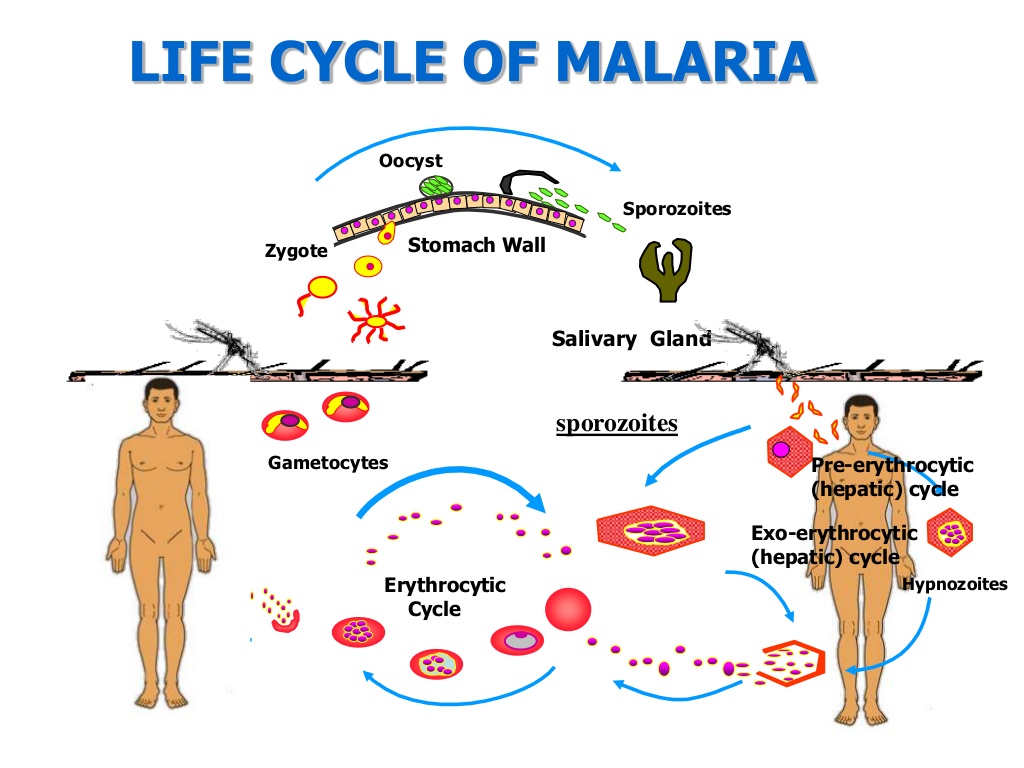Malarial Parasite
Definition
The malarial parasite is a parasitic protozoa belonging to the genus Plasmodium
Single celled organism
Cannot survive outside the hosts
The species in the genus Plasmodium that infect human beings are :-
Plasmodium vivax
Plasmodium ovale - added complicationof a dormant liver stage, which can be reactivated in the absence of a mosquito bite, leading to clinical symptoms.
Plasmodium malariae
Plasmodium falciparum - responsible for the majority of malaria deaths
Plasmodium knowlesi
Plasmodium ovale and plasmodium malariae - only a small percentage of infections.
Incidence
Plasmodium infects red blood cells in mammals (including humans)
Found worldwide
Especially in tropical and temperate zones
Endemic in tropical and subtropical regions
In India, about 1.5 to 2 million cases and 1000 malarial deaths/yr (mostly from tribal and hilly and inaccessible areas).
Taxonomic Classification
Kingdom : Protista
Subkingdom : Protozoa
Phylum : Apicomplexa
Class : sporozoa
Order : Eucoccidiida
family : Plasmodiidae
Genus : Plasmodium
Species : vivax, ovale, malariae, falciparum etc
Antimalarial medicines
Artemether -lemefantrine
Artesunate-amodiaquine
Each ACT is a combination of two or more drugs that work against the malaria parasite in different ways
Chloroquine phosphate is the preferred treatment for any parasite that is sensitive to the drug
Atovaquone - Proguanil (Malarone)
Doxycycline
Mefloquine
Primaquine
Tafenoquine
Life cycle of Plasmodium vivax
Life cycle of Plasmodium vivax is completed in two hosts:
1. Primary host or definitive host: Female Anopheles mosquito = sexual phase of the parasite
2. Secondary host or intermediate host: human = asexual phase of the parasite
Life cycle of Plasmodium vivax is divided into:
Asexual cycle or Schizogony in man
Schizogony = asexual reproduction - asexual multiplication in liver cell (Liver Schizogony)and RBCs (Erythrocytic Schzogony)of man.
An infected female Anopheles mosquito injects thousands of sporozoites into the bloodstream
Asexual cycle or schizogony in human is completed in following phases:
Pre-erythrocytic schizogony
Exo-erythrocytic cycle
Erythrocytic cycle
Post-erythrocytic cycle
Formation of gametocytes
1. Pre-erythrocytic cycle (also called the pre-erythrocytic schizogony)
When the sporozoites enters the blood it remains active for about half an hour and disappears from the blood circulation.
It enters into parenchymatous cell of liver.
Sporozoites in liver cell grow into schizonts.
The nucleus of schizont multiply asexually and forms thousands of merozoites.
Liberated out in the form of cryptomerozoites through ruptured liver cell.
It is completed in 8-10 days.
2. Exo-erythrocytic schizogony(exo-erythrocytic schizogony)
The cryptozoites infect the fresh liver cell and become schizont.
The liberated merozoites in this phase is called metacryptozoites.
Micro metacryptozoites enter the red blood cells and start erythrocytic phase.
Macro metacryptozoites infects the fresh liver cells to continue exo-erythrocytic phase.
NOTE: Exo-erythrocytic cycle is absent in Plasmodium falciparum.
3. Erythrocytic cycle (Erythrocytic schizogony)
The micro metacryptozoites that enter erythrocytes pass through trophozoite stage, signet ring stage, amoeboid stage and schizont stage. (One microcrytozoite in one RBC)
They ingest hemoglobin This stage is called trophozoite stage.
They forms a ring like structure known as signet ring stage.
Trophozoites enlarge and develop pseudopodial processes → amoeboid stage.
The hemoglobin is broken down into hematin and globin. The globin is absorbed by the cell and hematin is deposited in the form of hemozoin (toxic malarial pigment).
The amoeboid trophozoites becomes erythrocytic schizont. Asexual multiplication takes place in schizont and forms merozoites which RBC and get liberated in the form of erythrocytic merozoites.
Numerous yellowish eosinophilic granules appear in the cytoplasm of the host corpuscles which are called schuffners granules.
Erythrocytic cycle takes about 48 hours.
Many merozoites reenter RBC and repeat the erythrocytic cycle.
4. Post-erythrocytic cycle
Some merozoites after erythrocytic cycle invade the liver cell and undergo another schizogonic development - called post-erythrocytic cycle.
5. Formation of gametocytes
Many merozoites develop into gametocytes.
The gametocytes are of two types:
i. Macrogametocytes or female gametocytes: These are large (10-12µ) and numerous in number. They have small compact peripheral nucleus. They have reserved food materials and the cytoplasm is dark in color.
ii. Microgametocytes (male gametocytes)
Further development of gametocyte is only possible in mosquito.
Life cycle in mosquito (Sexual Cycle)
Anopheles mosquito bites an infected persons, and gets gametocytes and other stages of erythrocytic cycle along with blood.
Gametocytes reach the stomach.
All the stages along with RBCs are digested except gametocytes.
Gametogenesis
Process of formation of gametes from the gametocytes
Formation of microgametes (male)
Microgametocytes enters mid-gut of mosquito. Divides to form 6-8 daughter nuclei which transform into male gametes (sperms). They have flagellae and move actively in search of female gametes.
Formation of macrogametes (female)
Macrogametocyte become female gametes or macrogametes.
The female gamete is non-motile and develops a cytoplasmic projections called cone of reception or fertilization cone on one side.
Fertilization
One microgamete penetrates into one macrogamete through the cone of reception and fertilization takes place and a zygote is formed the stomachof mosquito (9 to 10 days)
Formation of ookinete
After fertilization, the zygote remains rounded and non-motile for some time. Then it becomes elongated ookinete.
Ookinete is motile. It penetrates the wall of stomach It settles into the inner portion of stomach wall.
Formation of Oocysts
The ookinete becomes spherical, take nutrition from the wall of stomach and get enclosed in a thin, elastic and permeable cyst wall - sporont.
Many oocysts (<500) are seen on the stomach wall.
Sporogony
Asexual multiplication.
It is the process of formation of sporozoites from the zygote by multiple fission.
Oocysts matures. The nucleus of oocyst divides first by meiosis and then by mitosis, and forms sporozoites ( sporoblasts.) and forms sporozoites. Each oocyst fills with numerous sporozoites. Then the oocyst bursts and thousands of sporozoites are released in the body cavity (hemocoel) of mosquito.
The sporozoites are very active and motile They reach to the salivary glands of the mosquito. Then the sporozoites are ready to infect the healthy person after each bite.
* * * * * *



